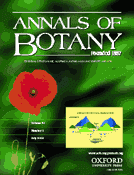linkedin post 2020-09-17 04:40:08
COMMUNICATION SUPERHIGHWAY. "In their commentary, Jorgensen et al., propose that plants contain a mechanism designed to transfer information over long distances--similar in function to an animal's bloodstream or nervous system." https://lnkd.in/dHbnkTD View in LinkedIn


